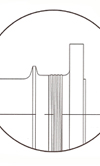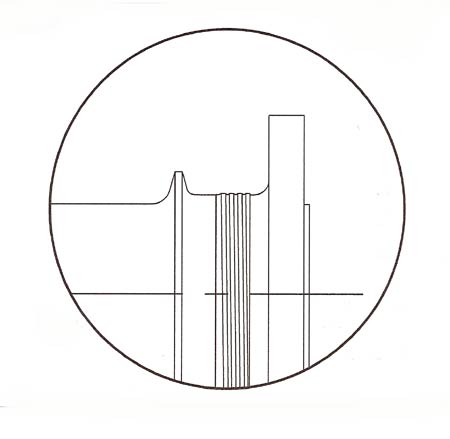The rear crankshaft oil seal
 Historically, the rear main bearing oil seal has always been a challenge for the engine designer. Ask any modern competitor of a classic or vintage racecar when apart from getting the engine started in the first place, the second most important quest is to keep the oil where it belongs - in the sump and not on the garage floor!
Historically, the rear main bearing oil seal has always been a challenge for the engine designer. Ask any modern competitor of a classic or vintage racecar when apart from getting the engine started in the first place, the second most important quest is to keep the oil where it belongs - in the sump and not on the garage floor!
Hidden out of sight somewhere between the rearmost main bearing on the crankshaft and the engine flywheel, the zone is rarely awash with oil but neither is it completely free of it, so designers in the past have come up with solutions that worked tolerably well at the time but are hardly acceptable for today's drip-free expectations.
The principal issue relates back to the practice of attaching the flywheel to the crankshaft and ensuring that the fastener loads are distributed evenly around the mating flange. In most situations this flange will have a diameter greater than that of the rear bearing and consequently, the usual method of sealing - fitting a lip seal - wasn't possible. At this time the surface speeds tolerated by the elastomer technologies available were much less.
Advances in elastomer and lip-coating technology eventually cured the problem, enabling the manufacture of much larger diameter seals. But engines designed much before the 1960s or '70s didn't have that as an option. For them, fortunately, oil leaks were an accepted fact of automotive life, possibly a carry-over from the steam engine tradition when a wipe with an oily rag was the most practical solution - and anyway, the presence of a liberal quantity of oil served to protect the underside of the car from the ravages of rust.
At the time, a number of possible solutions existed and, apart from efforts to direct the oil spraying from the rear bearing away from the area, other options included a metal disc or flinger and/or the machining of some form of scroll device on the crankshaft immediately after the journal. Acting as an Archimedes screw, these spiral grooves are a close fit between the surfaces of the crankcase, above and sump, below. As the crank rotates, the action is to pump any oil trying to escape back towards the rear bearing again and return it to the sump.

In practice, this system worked very well when the engine was running; it was only when the engine came to a halt that slight leakage occurred, slowly dripping down through the flywheel/clutch bellhousing and eventually ending up on the garage floor or driveway. And in time, through wear in the bearings or movement of the sump, this leak would increase.
Because no contact took place, however, these mechanical seals are in some ways superior to lip seals, since (unlike the lip seal) no frictional forces are involved. But today's demands for drip-free driveways and the availability of fluoro-elastomer seals that can tolerate much higher surface velocities have virtually outlawed the Archimedian scroll, when even on classic engines these are being replaced by more modern (if less mechanically efficient) technology.
R. I. P. the DRIP.
Fig. 1 - The rear crankshaft oil flinger and Archimedian scroll
Written by John Coxon